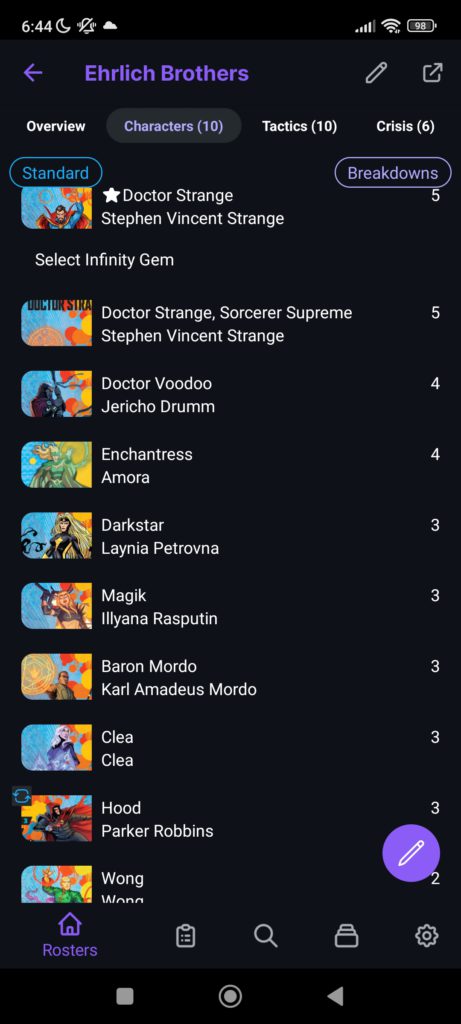
Welcome back to SG Protocol.
Today we start a new series where we look at different routes you can take to create a Roster.
Starting out this game can be overwhelming. While I love the near endless possibilities it opens up, being able to play every character in every roster can be a bit much to get your head around.
At time of writing we have no less than 42 known leaderships of which only one is a repeat (technically 5 of them aren’t out yet but we already know what they do). How will you ever pick the one (or more) that’s right for you?
As a reminder for a roster you need 10 characters, 10 team tactics cards and 6 crisis cards, 3 secures and 3 extracts.
I think there are four major ways to go about creating a roster.
The first way is to pick an affiliation you like the models, maybe rules and most likely lore of, pick characters and at least one leader from the list of affiliated characters and, if necessary fill the rest of the roster with splash characters.
To be able to distinct them we’ll call this the “Fluff” Approach.
The more informed version of this is what we’ll call the “characters” approach. It has similarities with the fluff approach but it needs some play experience. You look at the affiliation list once again but this time instead of a group of model you like the fluff off, you look for a group of characters you like on the actual playing table.
The third way it to pick a specific leader you like the leadership of and fill your roster with characters that profit a lot from it.
We will call this the “Leadership” Approach.
Finally, we have what I will call the “Morlocks” Approach, popularized by Lexa White in her Morlocks Podcast. Lexa’s way is a turnaround of the Leadership approach. You take a model you want to play in every game and build the roster around that model. Including finding the leadership that best helps the picked model shine. Lexa has a strict rule against picking the models home affiliations in her podcast, which we’ll exclude here.
Today we take a look at how the Fluff approach works and how it evolves to the characters approach. We’ll cover the other two, as well as extra topics like dual (or more) leaders, dual affiliations and building a roster based on a tactics card in future parts of the series.
The Fluff approach is usually the way new players will take. I certainly did. You look at the affiliation list and decide purely from the list of affiliated characters which team you want to play and build a roster of affiliated characters. I would not recommend doing this even for new players. Your favorite characters might not play the way you would want them and that can lead to negative play experience. Brother B.’s son (6 years at the time) of course wanted to play Web Warriors, but, being 6 he also wanted them to go around and punch some baddies, which frankly isn’t what they are good at in the slightest. Brother B. and I did not but I would recommend sticking to a core set leadership for your first 5 games with leaderships (there will be more to choose from in the upcoming core set of course). Just with a few games under your belt, you can understand what a leadership actually does in game.
The more advanced version of building a roster like this and probably the most common in casual gaming circles is the characters approach:
When you have some experience with a couple of characters or at least can make more informed evaluations of their stat cards you can decide that you want character X,Y and Z in your roster and maybe in most games so you look where each is affiliated and that leads to choosing an affiliation. If, for example you like Doctor Strange, Doctor Voodoo and Baron Mordo and want to put them on the table in most games you go with Convocation.
The big difference to the fluff approach here is that you need to know why you want your specific core characters and understand the leadership you choose for them to then fill out the rest of the roster with models who help your chosen game plan. This will be heavily influenced by what affiliation you’ve picked. Some affiliations like Wakanda, Midnight Sons or Convocation will be rewarded for staying heavily affiliated based on their tactics cards while others like Defenders, Winter Guard or X-Force only need an affiliated core and don’t gain too much by filling the roster out with affiliated characters on top of that.
In terms of actually building a roster there are multiple decent tools out there like cerebromcp, Jarvis Protocol and my personal favourite Crit! Wild!

Here is an example of a Convocation roster I have build using the characters approach.
So after the affiliated core I chose some characters I think can make good use of the leadership and tactics cards because they have high Mystic defenses like Enchantress and Dark Star. (Competitive Convocation Rosters will include Grunt characters like Red Skull 2 or Shadowlands Daredevil for a specific trick but that is too advanced for this article).
The usual way is to pick characters, pick tactics cards and then crisises but Lexa convinced me in her podcast that going characters, crisises, tactics cards is actually the more sensible way. Because crisis selection will have more impact on what tactics cards are good for you than the other way around.
That is it for our first installment of the series. Feel free to reach out to me with any questions or suggestions 🙂
Next up we’ll look at the leadership approach but prior to that we will talk about different leadership types.
See you then and cheers from Germany 🍻

